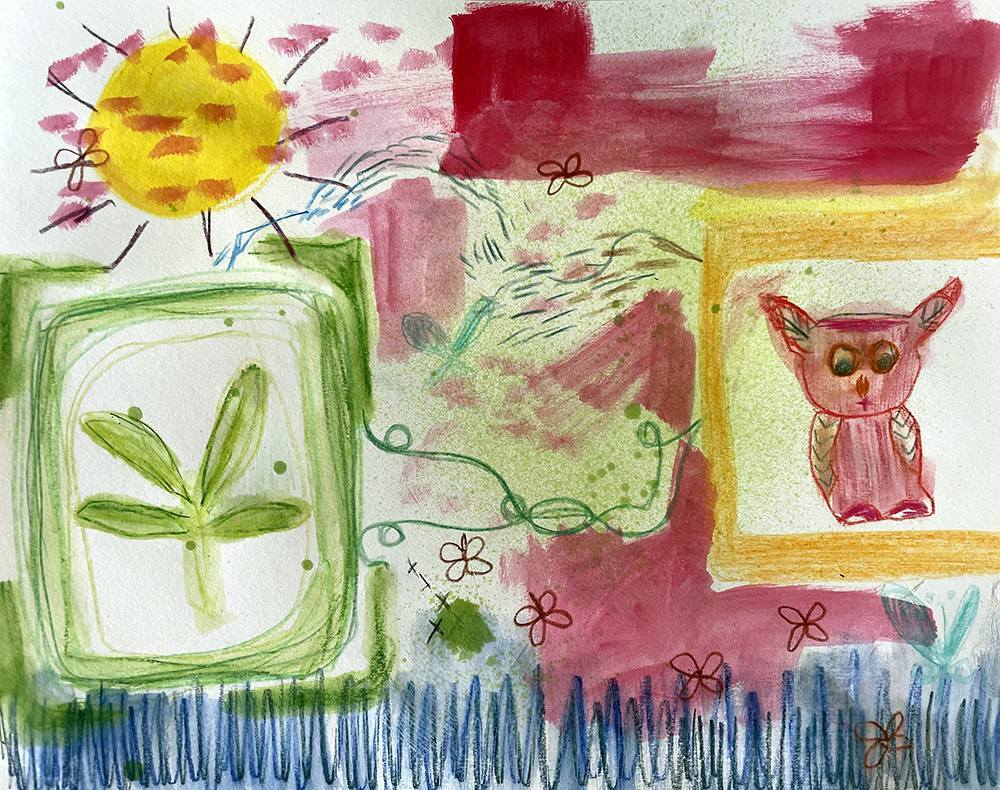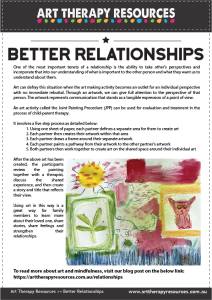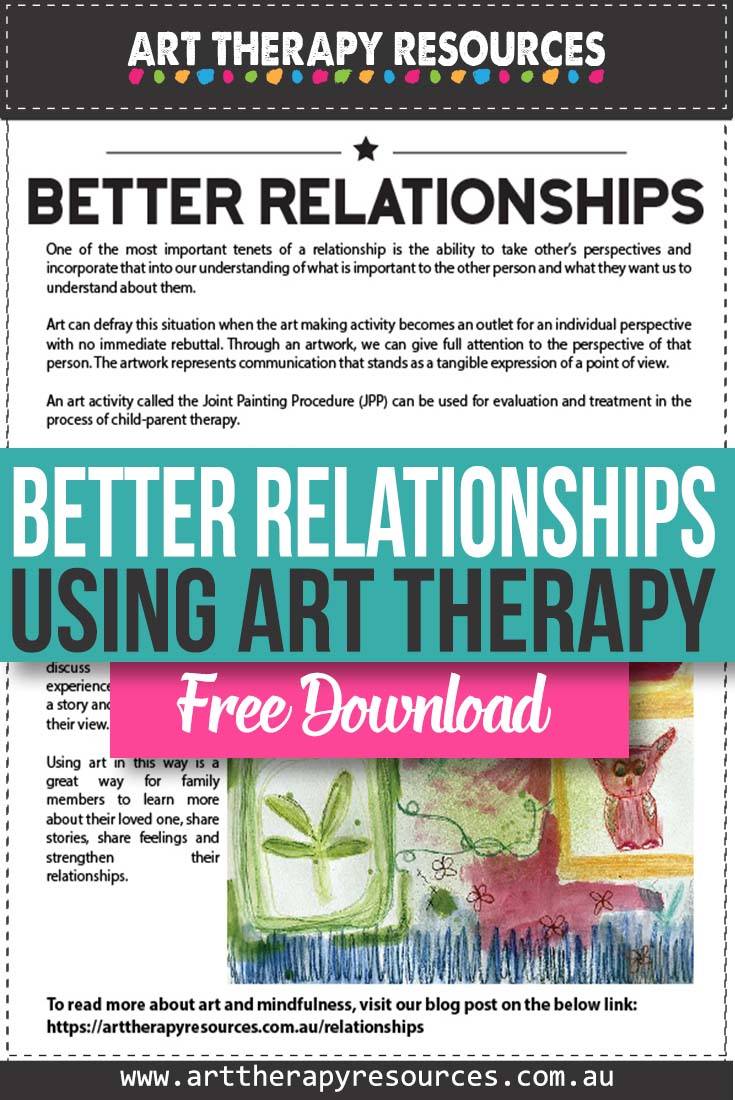THIS POST INCLUDES:
1. The role of therapy in relationships
2. Better relationships using art
3. Therapeutic relationships in art therapy
4. Free Download Art Exercise
THE ROLE OF THERAPY IN RELATIONSHIPS
All of these relationships bring different levels of engagement, expectations, and social norms. To navigate the nuances of each relationship can require some effort in understanding acceptable norms as well as individual perceptions of everyone involved.
When people come to therapists with a specific relationship in mind, they seek guidance and clarity to better understand themselves, their partner (or another person), and the dynamics of the relationship.
The therapist can help the client gain acceptance and insight by listening and reflecting back to the client on the possible dynamics that may be involved. Through this process, the client can discover thoughts and emotions they hold about their relationships so they can safely explore difficult belief systems they carry about themselves, their worth, and their connection with others.
BETTER RELATIONSHIPS USING ART
In an ideal world, we can verbally communicate all our needs to someone else and have them understand our perspective, however, words can often get in the way of fully understanding an outside point of view. The listener is always framing their perspective based on their understanding of the world around them.
Verbal communication can sometimes become a battleground of wit and intellect where words can be used as a weapon to prove a point or hurt someone. In these circumstances, verbal communication can become a destructive way to communicate and can encourage the idea that verbal communication requires constant rebuttal.
Art can defray this situation when the art making activity becomes an outlet for an individual perspective with no immediate rebuttal. Through an artwork, we can give full attention to the perspective of that person. The artwork represents communication that stands as a tangible expression of a point of view.
Using art removes the reliance on intellectualizing our emotions and thoughts as words and asks us to rely more on our subconscious as the hands become the articulator of our thoughts and emotions.
As an ancillary benefit, art making can reduce stress and moderate our moods which can in turn impact our approach to communicating with others about difficult experiences in our life.
Art therapy can play an important part in therapy involving children. As children are not yet fully developed in articulating thoughts and emotions, art can act as a conduit for children, therapists, and other family members to be included in the child’s internal world. This can be done through the parent or therapist observing the child making art and it can also involve the parent or therapist collaborating with the child to create art. In a situation where a child may be reticent to participate in art making, the therapist or parent can make art to model the skills and activities that the child can use.
An art activity called the Joint Painting Procedure (JPP) can be used for evaluation and treatment in the process of child-parent therapy. This procedure has been identified to focus on:
- Mutual recognition between parent and child
- Mutual regulation
- Mentalization
- Bidirectionality for communication
It involves a five step process as detailed below:
- Using one sheet of paper, each partner defines a separate area for them to create art
- Each partner then creates their artwork within that area
- Each partner draws a frame around their separate artwork
- Each partner paints a pathway from their artwork to the other partner’s artwork
- Both partners then work together to create art on the shared space around their framed individual art
After the above art has been created, the participants review the painting together with a therapist, discuss the shared experience, and then create a story and title that reflects their view.
Using art in this way is a great way for family members to learn more about their loved ones, share stories, share feelings and strengthen their relationships.
An example of artwork created using the Joint Painting Procedure (JPP) is included below:

THERAPEUTIC RELATIONSHIPS IN ART THERAPY
In this respect, the art therapist becomes an important component of the therapeutic benefits that art therapy can provide. The therapeutic alliance is an integral part of a client’s journey through therapy. Numerous studies have shown that the therapeutic alliance is one of the strongest predictors of treatment outcomes.
The therapeutic relationship between therapist and client becomes a place where clients can feel safe to express their innermost fears and concerns. The art making can become a conduit for the client to express their thoughts and emotions with the therapist.
Art making can also become a shared experience between therapist and client and the final artwork becomes a tangible outcome of that shared experience.
Therapeutic relationships often follow a three stage process that focuses on:
- BOND – developing an interpersonal bond between the therapist and client
- GOALS – establishing agreed goals of therapy
- TASKS – collaborating on tasks that work towards achieving these goals
Key components of building a therapeutic alliance:
- you are interested in your client and helping them
- you understand the emotions your client is experiencing
- you have an understanding of your client’s problems
- you accept the client without judgment
Ancillary to the therapeutic alliance that develops between the client and therapist, the therapist may also further enhance a client’s therapeutic experience by providing access to art materials, supplies, and a safe space in which the client can feel supported and encouraged to explore their inner world. These additional elements build a broader picture that supports clients to become engaged and inspired by the creative process.
FREE DOWNLOAD: Art Therapy Exercise

BUILD YOUR ART THERAPY REFERENCE MATERIALS:
Pin this image to your Pinterest board.

SHARE KNOWLEDGE & PASS IT ON:
If you’ve enjoyed this post, please share it on Facebook, Twitter, Pinterest. Thank you!
